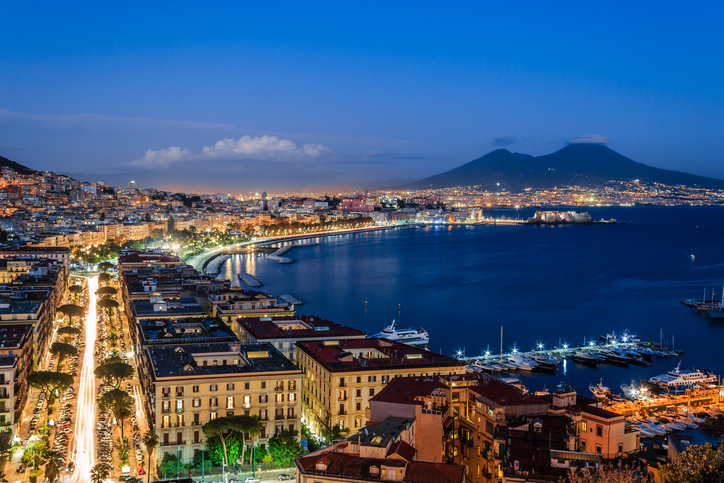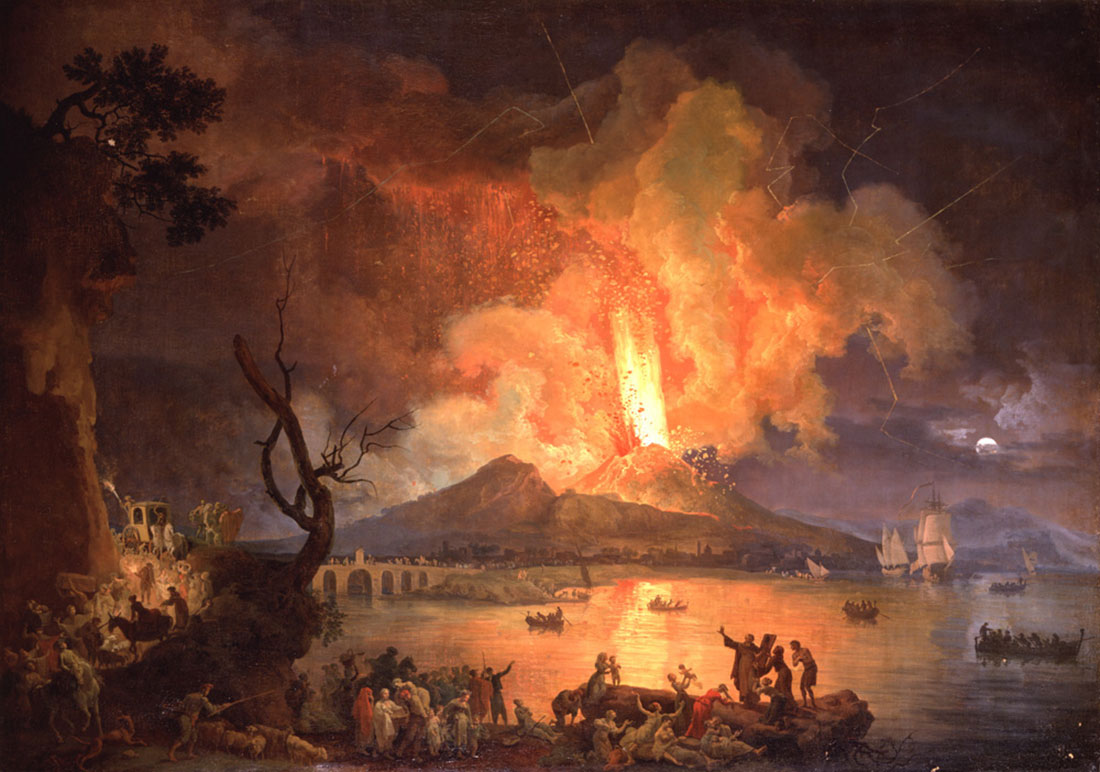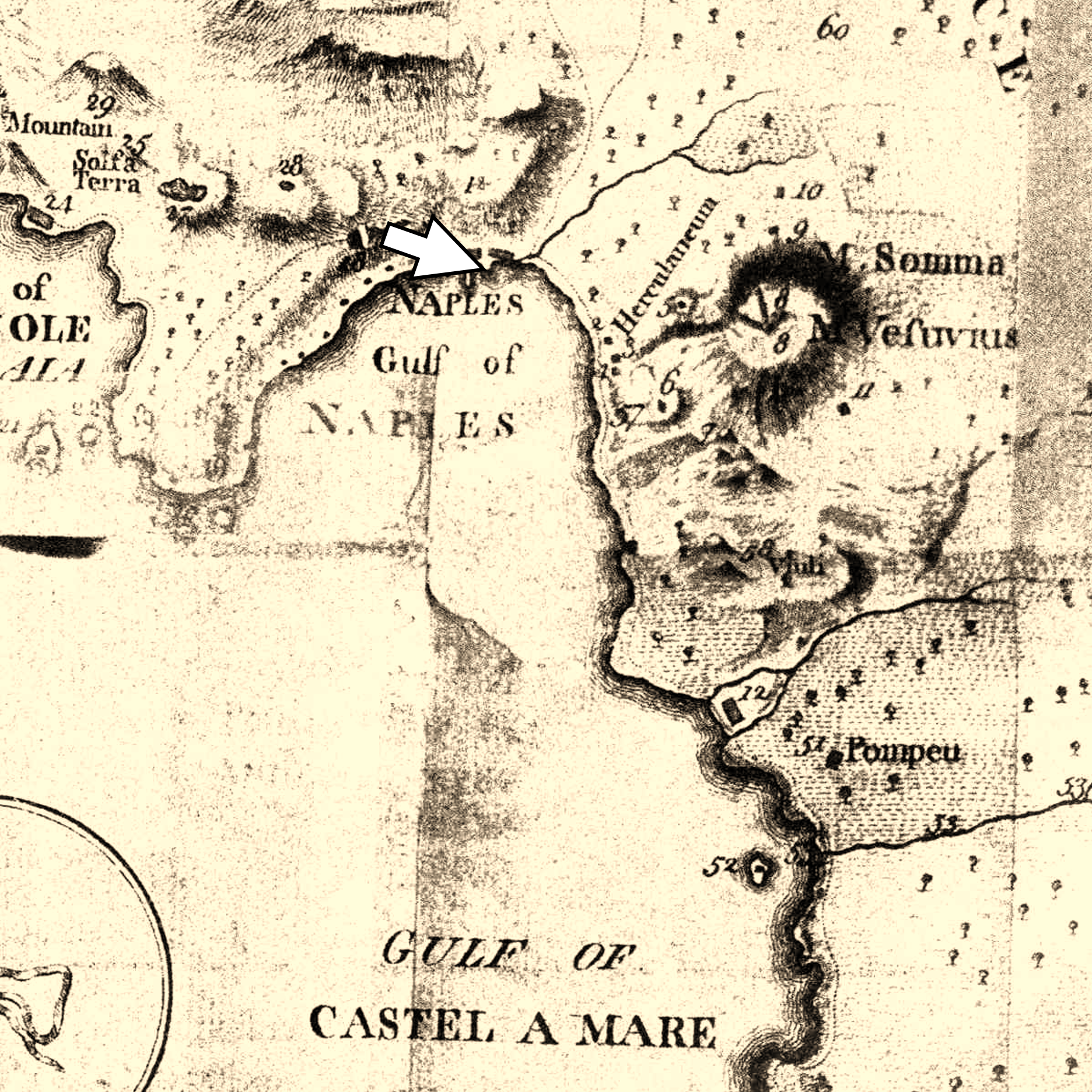Eruption of Mount Vesuvius with the Ponte della Maddalena in the Distance
Vesuvius

View in the evening of the Gulf of Naples and Mount Vesuvius in the distance. Frans Sellies / Getty Images
Mount Vesuvius, famous for its destruction of the ancient cities of Pompeii and Herculaneum, is a volcano located off the Gulf of Naples, Italy. Since its infamous eruption of AD 79, Vesuvius has remained continuously active over the centuries, the most recent eruption occurring in 1944.
The viewpoint of Volaire’s painting is indicated by the white arrow above. The artist looked from the city’s shoreline, over the Bay of Naples, to the volcano across the water. The Ponte della Maddalena, the bridge visible in the painting, crossed the Sebeto River extending to the northeast. Across the coast, one can see the 18th-century town of Herculaneum, which was built atop the ancient Roman city of the same name after the eruption of AD 79.



